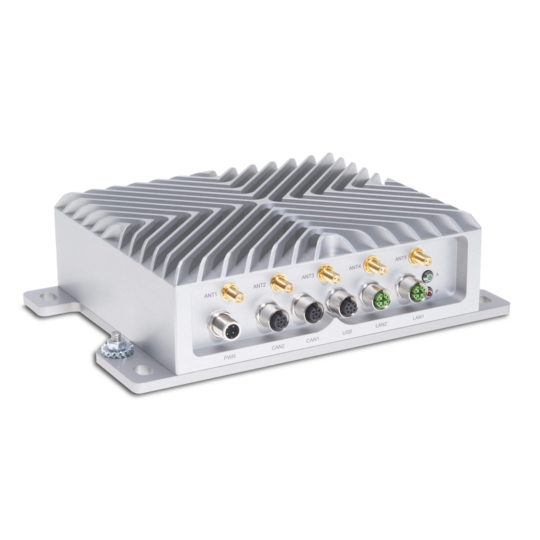Construction Industry Deploys Rugged Jetson AI Computers & LiDAR Sensors
Artificial Intelligence is being vastly adopted by the construction industry. Known for extreme environmental conditions which prove challenging for adopting modern technology we were approached by a leading manufacturer of construction vehicles to support their requirements for integration of NVIDIA Jetson outdoors at the Edge. Such vehicles included; graders, wheel loaders, off-highway trucks, track loaders, mining trucks and dozers.
“Specialising in deployment of autonomous vehicle PCs we configured ruggedized Jetson compute platforms compliant with the vigour’s of outdoor environments, wide operating temperatures, variable power sources, shock and vibration.” Andrew Whitehouse, CEO at Things Embedded.
Integrated with industrial NVIDIA Jetson modules including TX2 NX, Xavier NX and AGX Xavier, the rugged AI computers operate as the machinery’s computer vision, handling tasks such as object recognition, environmental perception, and intelligent control of the vehicles. Various sensor inputs were to be interfaced with the ruggedized AI computers and data was expected to be processed and evaluated simultaneously in real time.
Making Light Work of Shock & Vibration, Extreme Temperatures, Moisture and Dusty Environments.
Real-time LiDAR Monitoring, Powered over Ethernet
Industrial sites are beginning to accelerate their operations with smarter vehicles, smarter machines, and smarter wearables. Our customer takes proven LiDAR technology from the automotive industry and deploys their code into the construction industry to ensure early detection of deviations and danger before serious damage occurs.
Volume Changes with 3D Modelling
The lidar sensors are constantly scanning its environment with thousands of measurements that create a 3D model. This allows analysis in terms of volumes, shapes, and distances, compared to video analysis for example. A volume change can be an increase or loss of volume, and it is also possible to filter objects based on the volume. A volume increase in a static scene means that new objects enter the scene and can be tracked. This feature supports tracking of the most common objects such as people and vehicles. Spillage and other production deviations can also cause a volume increase if the area should be empty normally. A volume loss is also serious, it can be caused by a breakdown or collapse in a mountain or the infrastructure. Volume change analysis can be used in many ways to separate changes to the desired situation. It is also possible to have different rule for different areas, such as vehicle roads and safe walking paths for people.
Simplified Installation with PoE Onboard
With two gigabit ethernet interfaces on board as standard the systems were expanded to interface with additional LiDAR sensors being installed on the construction vehicles. PoE (Power over Ethernet) add-on boards providing an additional four gigabit power over ethernet ports were installed on the Jetson computers with M12 connectors for rugged connectivity. The board is powered internally via the embedded system meaning no additional power supply is necessary.
Fanless and IP67/IP69 Waterproof Protection with Rugged Locking Connectors
The Jetson computers were to be installed in very challenging environments and frequently subjected to extreme temperatures and large quantities of dust and debris. Being impervious to dust, water and chemicals, the hard-anodized aluminium housing is the bedrock of the adopted rugged AI compute platforms. Meeting IP67 and IP69 standards in protection the systems are capable of withstanding not just natural elements such as rain but can also be washed down with high pressure jets, commonly found within the construction industry. This means no external cabinets were necessary for the outdoor deployment of Jetson technology at the edge.
Suitable for 24/7 operation, the handling of repeat shock and vibration was taken care of with a fanless design, zero moving components on board and utilizing M12 locking connectors for power and communication. Before deployment the systems were to be soak tested and undergo endurance tests for shock (EN 60068-2-64) and vibration (EN 60068-2-27) with frequency ranges of 5 to 2000 Hertz, an easy pass.
Deploying your AI Code in Challenging Environments?
Tell us about your application and a member of our team will get right back to you.

